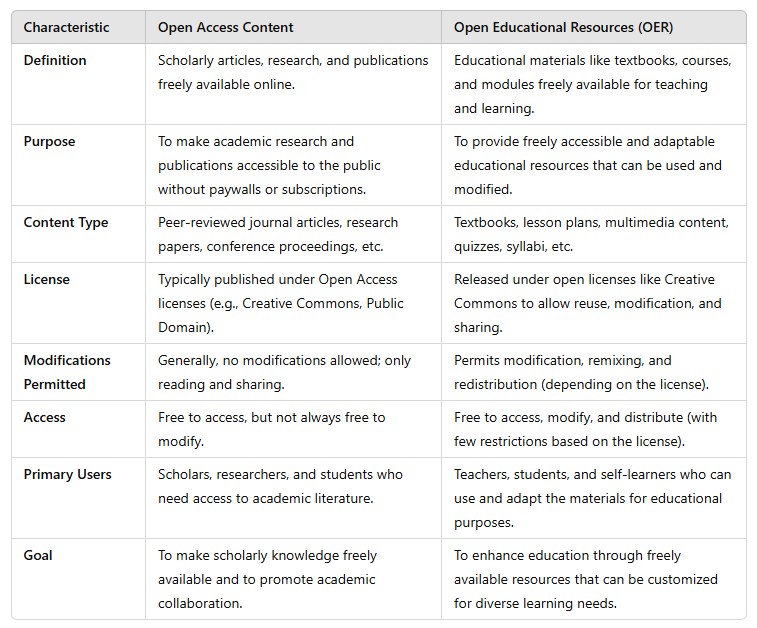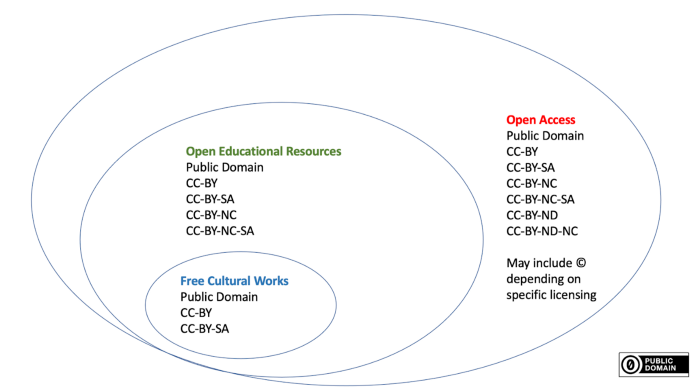A description of the relationship between OA and OER
Open Access refers to materials, such as research articles, books, and data, that are freely available online without any subscription or payment barriers. This open access ensures that scholarly knowledge is disseminated and accessible to a global audience.
Open Educational Resources, on the other hand, are educational materials that are not only freely accessible but also openly licensed, allowing for adaptation, redistribution, and reuse. This means that instructors and learners can modify OER to suit their specific needs, creating a flexible learning environment.[1]
While all OER are openly available (OA), since they are freely available and openly licensed, not all OA materials qualify as OER. The key distinction lies in the purpose and licensing. While OA content may be openly available, it is not always designed to be adapted for teaching and learning purposes.
Here’s a table comparing the characteristics and purpose of Open Access Content and Open Educational Resources (OER)

Note. Reprinted from Open Content Alliance. (n.d.). Open Access vs. Open Educational Resources. Retrieved February 18, 2025, from https://www.opencontent.org
Here is an illustration of the relationship between Open Access (OA) and Open Educational Resources (OER) using concentric circles.
The outer circle represents Open Access (OA), a broad movement focusing on freely accessible research articles, journals, and other academic publications. The inner circle represents Open Educational Resources (OER), which includes freely available teaching and learning materials such as textbooks, lesson plans, and multimedia content. The smaller circle represents Public Domain/Free Cultural Works and includes works without copyright restrictions that can be freely used, modified, and distributed by anyone.
Overlapping Synergies: This visual illustrates how OA, OER, and Public Domain (PD) content can complement each other while maintaining their distinct identities. The shared use of Creative Commons licenses underlines the openness and freedom of use that both movements promote. The connection between OA research, OER, and PD materials is significant in enhancing accessibility and advancing research and education.
- OA research provides the foundation for knowledge that can be used to create or update OER materials.
- OER materials make that knowledge accessible to students and educators globally.
- Public Domain content is freely available, enriching both OA and OER by providing additional resources that may be used.

OA, OER, and PD content are not isolated efforts, they are synergetic, each supporting and enriching the others. Together, they contribute to the broader goal of creating a more open and accessible global knowledge ecosystem.
Test your knowledge
Developed by William Perrenod and licensed under CC BY 4.0
